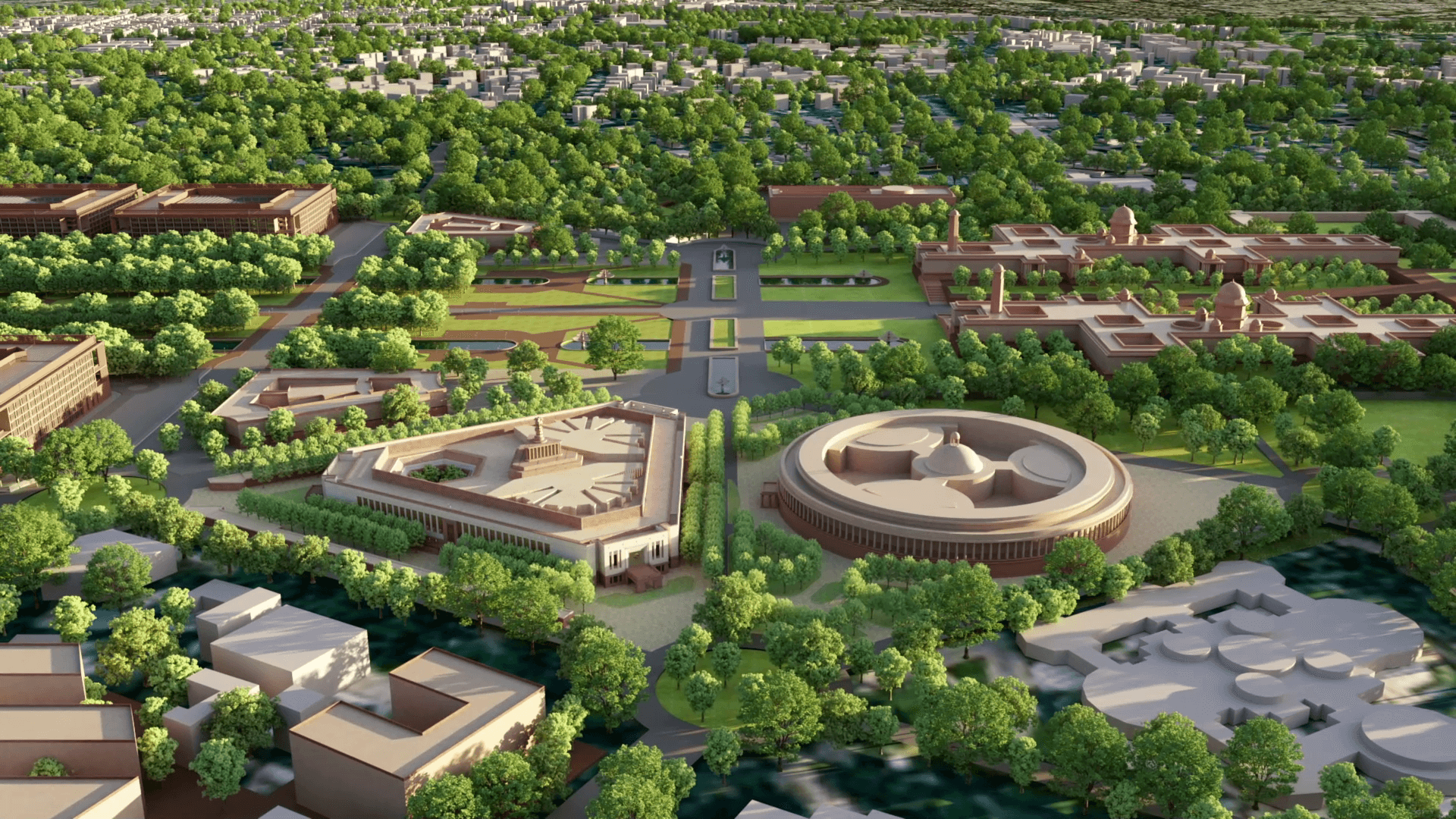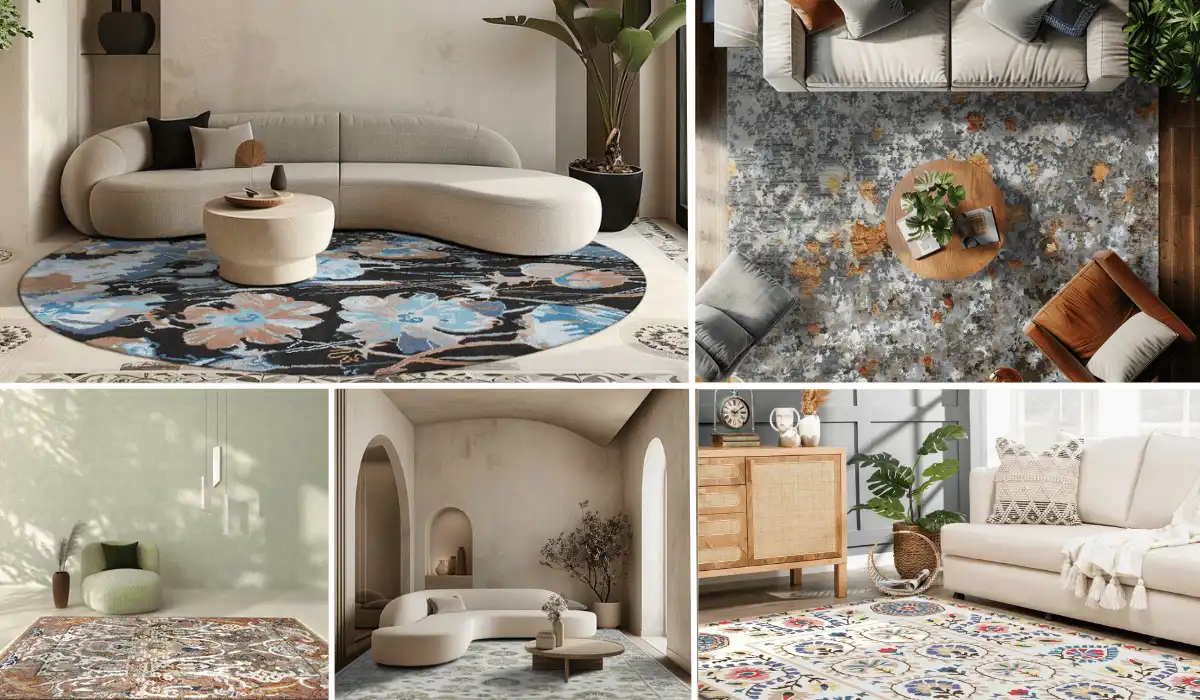As the world’s largest democracy, the Indian Parliament holds a significant position in the world. It represents the legislative body of our democratic government. The Parliament building thus stands as a representation of its people, their opinions, and choices making it an embodiment of the Constitution of India – of the people, for the people, and by the people. It is through the Parliament that Indians participate in the country’s decision-making process by electing a government of their preference. Hence, the Parliament building is a symbolic representation of the country through its form, material, and architecture.
Also known as the Sansad Bhavan, the present Parliament house is a heritage structure constructed between 1921 and 1927. As a result of the Government of India Act 1919, a bid to increase the number of representatives was accepted in order to increase participation in the country’s governance. Therefore, the inauguration of the Parliament House (then known as the Central Legislative Assembly) marks an important chapter in laying the foundation of representative rule in India.
The building was inaugurated by Lord Irwin (then Viceroy of India), in January 1927. The Assembly was planned in a circular form to accommodate 3 segments – the first being for the Legislative, the second for the Council of State, and the third being the Chamber of Princes. The building was designed in Indo-Gothic style by British architects Sir Edwin Lutyens and Sir Herbert Baker.
A New Parliament, A New India
India’s Parliament House is a 93-year-old structure that was built to suit the needs of the 20th-century world. However, the capacity of the Sansad Bhavan has grown much more than its earlier prescribed numbers. With changing times, the Parliament building finds itself insufficient to accommodate the pressing needs of its representatives. Originally designed to seat about 700 people, the Parliament is today overwhelmed with 800+ attendees who occupy the aisles and corridors when the house is present in full capacity.
Adding to this, the outdated amenities, infrastructure, absence of technology, and acoustical facilities have made it vital to keep upgrading and renovating the Parliament House in sections. Also, owing to India’s progress in world affairs, the country envisions a significant potential increase in the number of Parliamentarians by 2026. All these factors have necessitated the construction of a new Parliament House that is modern, state-of-the-art, and represents a new India in a new age. After the inaugural ceremony of the new building, it is proposed that the present Parliament House will be conserved as a national heritage asset.

All about the New Parliament Project
The proposed Parliament building is a part of the Central Vista Redevelopment Project launched by the Government of India in 2019. With the aim to revamp the administrative district of India’s seat of power – New Delhi, the project comprises of redeveloping the 3 km long Rajpath stretching from Rashtrapati Bhavan to India Gate while converting the North and South blocks as publicly accessible museums. The creation of a new Central Secretariat (house of ministers), Parliament building, and the Offices of the Vice-President and the Prime Minister is a part of the macro-level plan. Of this, the Parliament building is said to have a built-up area of 65,000 square meters (7,00,000 square feet).
While HCP Design Planning and Management Pvt. Ltd. headed by architect Bimal Patel is in charge of designing the new Parliament House, the construction work is undertaken by Tata Projects Ltd. The form of the New Parliament building is a four-storeyed triangular mass, indicating a balance in the sacred geometry of various religions that thrive in India. The proposed Central Vista layout suggests that a new Parliament will be built adjacent to the existing one. The central idea of the project is themed around the Prime Minister’s “Make in India” initiative. The new design is estimated to accommodate 1100+ Parliamentarians, which is 1.5 times the capacity of the existing Parliament.

On a broad level, the building is zoned into three spaces, i.e., the Lok Sabha, the Rajya Sabha, and the Central Lounge which is built as an open courtyard. The three spaces are interlinked with a constitutional hall, which will represent the strong constitutional personalities of the nation. The other spaces include a lounge for members of Parliament, committee rooms, library, and dining areas. The material palette of the New Parliament is inspired and in harmony with the existing one. The walls will be constructed in Dholpur stone and parts of the interiors will be done in red sandstone or red granite. A flooring of Agartala bamboo will be laid at the entrance foyer and greenstone marbles from Rajasthan for another part of the Parliament.
The national symbols – the Lotus, the Peacock, and the Banyan Tree will be the themes for the interior design of the New Parliament. The Lok Sabha will represent the Peacock, the Rajya Sabha will symbolize the Lotus and the central courtyard will personify the Banyan Tree. The furniture will be designed by sourcing teak wood from Maharashtra. Floral inlay patterns on the floor, intricate wooden jaalis, frescos on the ceiling, shlokas, and traditional Indian painting and carvings will make the surface finishes a delight to watch. The project expenses are estimated to be INR. 927 Crores.

The New Parliament will be tech-integrated and equipped with modern infrastructure. It will be designed for earthquake resistance, as the site location falls in Delhi’s Level IV seismic zone. The building will have provision for audiovisual communication and data network systems. The interior design will be designed in a manner so as to accommodate virtual sound simulations to set appropriate sound reverberations and limit the echo. The furniture will be provisioned for smart displays and biometrics to facilitate ease of voting. An intuitive graphical interface and digital language interpretation will produce real-time data to help the House Speaker regulate the sessions.
Throwing light on designing a building of such national importance architect Bimal Patel says,” If one takes a simple approach, I think one comes up with solutions that make sense today; with a lot of respect for the history and the ethos of the place. I believe that is the right way to about it.”
The New Parliament building design is a visionary project that will strengthen India’s position in global relationships. A project of that scale and magnanimity will have an impact on the country’s resources. While the environmental impact assessment of the project has been mapped, the sustainability design measure remains a mystery. The thought of creating the New Parliament building- a heritage of the future seems interesting, but how successful it turns out to depend entirely on how the people of India embrace it.
Sources:
https://centralvista.gov.in/new-parliament-building.php
Discover more from Biltrax Media, A Biltrax Group venture
Subscribe to get the latest posts sent to your email.

























